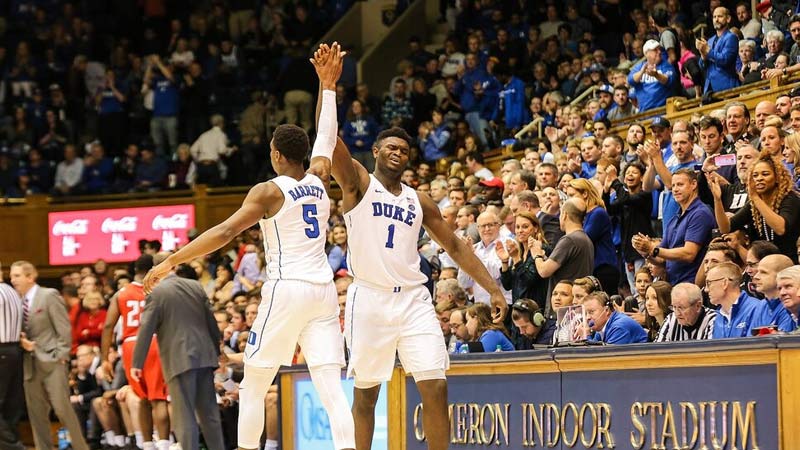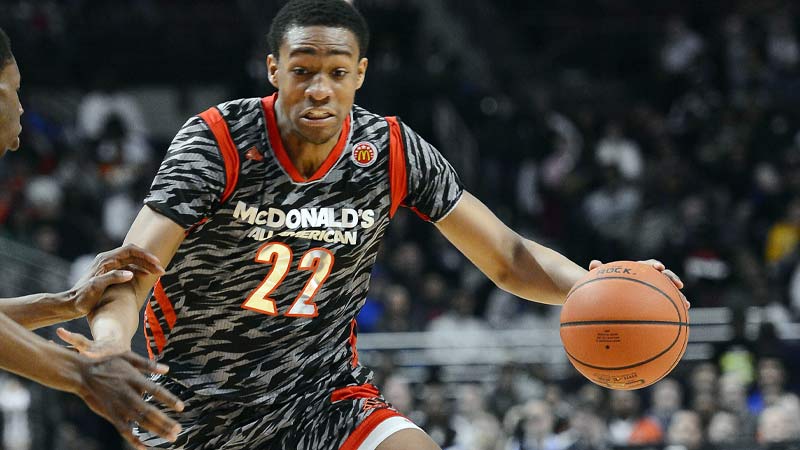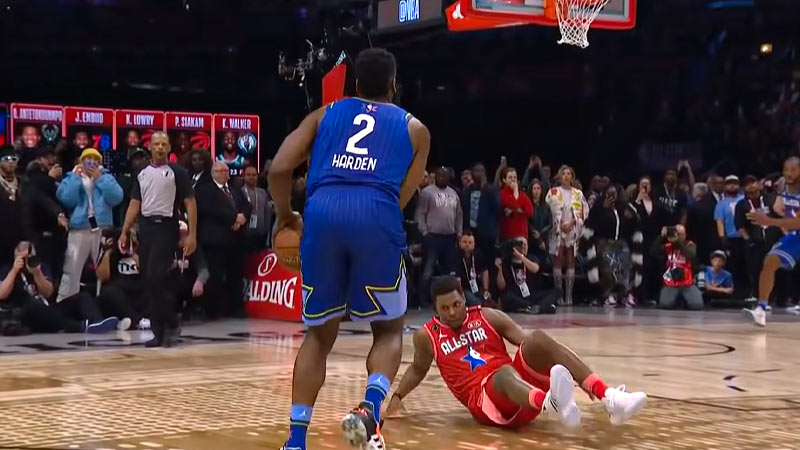The NBA’s one-and-done rule has been a subject of fascination and debate since its implementation in 2006.
Designed to govern the eligibility of basketball players to enter the NBA draft, the rule requires players to be at least one year removed from high school graduation and at least 19 years old during the draft year.
In this blog post, we delve into the significance, controversies, and frequently asked questions surrounding the one-and-done rule in NBA basketball.
What Is NBA Basketball One And Done Rule?
The one-and-done rule is a policy implemented by the NBA that regulates the eligibility of basketball players to enter the NBA draft. It was established to determine when players can make the leap from high school to the professional league.
Age and Education Requirement
To be eligible for the NBA draft, players must meet two criteria. First, they must be at least 19 years old during the calendar year of the draft. Second, they must be at least one year removed from their high school graduation.
This means that players typically have to complete one year of college or play professionally overseas before they can enter the NBA draft.
Pre-2006 Era
Prior to the implementation of the one-and-done rule in 2006, high school players were allowed to enter the NBA directly from high school.
This led to notable players like LeBron James, Kobe Bryant, and Kevin Garnett making an immediate jump to the NBA without playing college basketball or competing internationally.
Policy Implementation
The one-and-done rule was established as a result of an agreement between the NBA and the National Basketball Players Association (NBPA) in 2005. It was implemented starting with the 2006 NBA draft.
Intention and Rationale
The primary goal of the one-and-done rule was to encourage players to gain more experience, maturity, and skill development before entering the NBA.
The league and the players’ union believed that an additional year of college or playing professionally abroad would better prepare players for the demands of professional basketball and increase the overall talent level in the league.
One Year Requirement
Under the one-and-done rule, players must spend at least one year after high school graduation playing college basketball or participating in professional leagues overseas.
This requirement aims to provide players with additional time to develop their skills, adapt to higher levels of competition, and enhance their basketball knowledge and understanding.
Criticisms and Debates
The one-and-done rule has faced criticism and sparked ongoing debates since its implementation. Some argue that it forces talented players who have no interest in college education to spend a year in college, which can be seen as an unnecessary requirement.
Critics suggest that players should have the choice to enter the NBA directly from high school, as it allows them to capitalize on their potential and professional opportunities at an earlier age.
History of One And Done Rule in NBA

Source: snoqap.com
The one-and-done rule in the NBA has an interesting history. Here’s a brief overview:
Pre-1971
Prior to 1971, there were no restrictions on when players could enter the NBA draft. High school players, such as Bill Russell and Wilt Chamberlain, went directly to the NBA, while others played college basketball before entering the professional league.
1971
The NBA introduced a requirement that players must be four years removed from their high school graduation to be eligible for the draft. This essentially mandated that players attend college for four years before entering the NBA.
1995
The NBA and the NBPA agreed on a new rule that allowed high school players to declare for the draft, but they had to wait for at least one year before becoming eligible. This was known as the “two-and-through” rule, as players had to spend two years in college or play overseas for one year before entering the NBA.
2005
The NBPA, led by then-executive director Billy Hunter, proposed the “one-and-done” rule during collective bargaining negotiations with the NBA. The rule was ultimately implemented starting with the 2006 NBA draft. It required players to be at least 19 years old and one year removed from their high school graduation to be eligible for the draft.
2011
The NBA and the NBPA renewed their collective bargaining agreement, keeping the one-and-done rule intact. However, they established a committee to study the rule and discuss potential changes.
Present
As of my knowledge cutoff in September 2021, the one-and-done rule remains in place. There have been ongoing discussions and debates about the rule, with some advocating for its removal or modification to allow players to enter the NBA directly from high school. However, any changes to the rule would require further negotiation between the NBA and the NBPA.
It’s important to note that the history and future of the one-and-done rule may evolve beyond my knowledge cutoff date, so I recommend staying updated with the latest developments from reliable sources.
When Did the NBA Implement the 1 and Done Rule?

Source: bleacherreport.com
The NBA implemented the one-and-done rule in 2006. It came into effect starting with the 2006 NBA draft. Prior to that, high school players were allowed to declare for the NBA draft directly out of high school, bypassing college basketball or any other professional leagues.
The decision to implement the one-and-done rule was the result of an agreement between the NBA and the National Basketball Players Association (NBPA) during collective bargaining negotiations in 2005.
The rule was seen as a compromise between the league and the players’ union, aiming to address concerns about player readiness and the impact on college basketball.
The one-and-done rule required players to be at least one year removed from their high school graduation and at least 19 years old during the calendar year of the draft.
This meant that players had to spend at least one year playing college basketball or participating in professional leagues overseas before becoming eligible for the NBA draft.
Significance of One And Done Rule in College Basketball
The one-and-done rule in college basketball has had significant implications for the sport. Here are some of its key significance:
Talent and Excitement
The one-and-done rule has led to an influx of highly talented players in college basketball. Players with NBA potential, who would have otherwise gone straight to the professional league, now spend at least one year in college.
This has brought an increased level of talent and excitement to college basketball, as fans get to watch future NBA stars compete at the collegiate level.
Increased Media Coverage
The presence of top-tier talent in college basketball due to the one-and-done rule has attracted increased media coverage.
Prominent sports networks, journalists, and scouts closely follow the performances of these talented players, resulting in heightened media attention, televised games, and increased exposure for college basketball as a whole.
Financial Impact
The one-and-done rule has had both positive and negative financial impacts on college basketball. On the positive side, the presence of highly skilled players has driven up ticket sales, television ratings, and overall revenue for college basketball programs.
Additionally, the increased exposure and excitement around the sport have led to lucrative sponsorship deals and increased merchandise sales.
However, on the negative side, some argue that the rule contributes to a lack of continuity in team rosters, as top players leave for the NBA after just one year, making it harder for fans to develop long-term connections with their favorite college teams.
Competitive Balance
The one-and-done rule has affected the competitive balance in college basketball. Top programs that consistently attract elite recruits have an advantage, as they can assemble highly talented teams each year.
Smaller or less prestigious programs may struggle to compete on the same level, as they cannot consistently attract top recruits who plan to leave for the NBA after one season.
This dynamic has resulted in a stratification of power among college basketball programs, with a few dominant teams and conferences consistently contending for championships.
Player Development and Education
While the one-and-done rule has been criticized for players being forced into college for a year, it does provide an opportunity for them to further develop their skills and gain valuable experience.
College basketball allows players to compete against high-level competition, receive coaching, and improve their game before entering the NBA.
Additionally, a year in college can provide a valuable educational experience for players, allowing them to pursue higher education or prepare for a potential future beyond basketball.
NBA Draft Evaluations
The one-and-done rule has also impacted NBA teams’ evaluations and scouting processes. NBA scouts and general managers have to assess players based on a single season of college basketball, which can be challenging given the limited sample size.
This has led to increased scrutiny and analysis of players’ performances during their college season, as teams try to gauge their potential and readiness for the professional level.
The one-and-done rule has significantly shaped the landscape of college basketball, impacting the talent pool, media coverage, finances, competitiveness, player development, and the NBA draft evaluation process.
While it has its advantages and disadvantages, the rule continues to be a topic of discussion and potential reform within the world of college basketball.
List of One And Done Players
Here is a list of notable “one-and-done” players in college basketball, who played one season in college before entering the NBA draft:
- Anthony Davis – University of Kentucky
- Kevin Durant – University of Texas
- Zion Williamson – Duke University
- Kyrie Irving – Duke University
- Derrick Rose – University of Memphis
- Michael Beasley – Kansas State University
- John Wall – University of Kentucky
- DeMarcus Cousins – University of Kentucky
- Karl-Anthony Towns – University of Kentucky
- Ben Simmons – Louisiana State University
- Andrew Wiggins – University of Kansas
- Markelle Fultz – University of Washington
- Trae Young – University of Oklahoma
- Brandon Ingram – Duke University
- Lonzo Ball – University of California, Los Angeles (UCLA)
- Jayson Tatum – Duke University
- Joel Embiid – University of Kansas
- RJ Barrett – Duke University
- D’Angelo Russell – Ohio State University
- Donovan Mitchell – University of Louisville
FAQs
Why was the one-and-done rule implemented?
The one-and-done rule was introduced with the aim of giving players an additional year of development and preparation before entering the NBA.
The league and the players’ union believed that this extra year of experience, whether in college or internationally, would benefit both players and the NBA in terms of skill refinement, maturity, and readiness for the professional level.
How has the one-and-done rule impacted college basketball?
The one-and-done rule has had a profound impact on college basketball. It has brought highly talented players to the collegiate level for a single season, generating increased excitement, media coverage, and revenue for the sport.
However, it has also led to concerns about a lack of continuity in team rosters and the potential imbalance between powerhouse programs and smaller schools.
Are there any alternatives to the one-and-done rule?
Yes, there have been ongoing discussions about potential alternatives to the one-and-done rule.
One proposal is to adopt a model similar to the system used by international basketball, where players can enter the NBA draft directly from high school or choose to play in professional leagues while maintaining draft eligibility.
Another suggestion is to follow the path of Major League Baseball, allowing players to either go pro immediately after high school or commit to a minimum of three years in college.
What are the criticisms of the one-and-done rule?
Critics argue that the one-and-done rule forces talented players, who have no real interest in pursuing higher education, to spend a year in college.
They believe players should have the choice to enter the NBA directly from high school, as it allows them to capitalize on their potential and professional opportunities at an earlier age.
Additionally, concerns have been raised about the academic focus and commitment of some one-and-done players during their brief college tenure.
Will there be any changes to the one-and-done rule?
The possibility of changes to the one-and-done rule has been a topic of ongoing discussion. While no significant modifications have occurred as of my knowledge cutoff in September 2021, it’s an area of interest for the NBA and the players’ union.
Any changes to the rule would require negotiation between both parties and consideration of factors such as player development, college basketball’s landscape, and the overall impact on the sport.
Wrapping Up
The NBA’s one-and-done rule has shaped the landscape of both professional and college basketball over the past decade.
While it has brought immense talent and excitement to college campuses, it has also faced criticisms regarding its impact on player choice and academic commitments.
As discussions and debates continue, it remains to be seen whether the one-and-done rule will undergo significant changes or remain a prominent aspect of NBA basketball in the years to come.
Thank you for your time.







